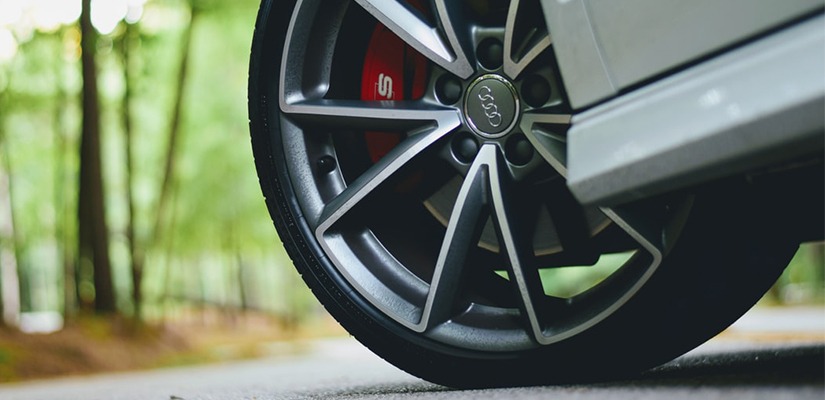Have you checked your tyres recently? Treads too thin? Time for new ones? Good, because driving around on unsafe wheels can lead to accidents, says the Automobile Association[1] at a 2018 car tyre safety demonstration in Pretoria. It showed how dangerous it is to drive with worn or damaged tyres.
“Worn tyres are simply dangerous. On one demonstration two identical cars drove on a wet skidpan to test braking; the car with the brand new tyres stopped considerably quicker, and better, than the car with the worn tyres.
In another demonstration, two cars were driven at high speed around a Dynamic Circular Track with a body of water of around 10mm depth positioned at the end of the lap. This tests aquaplaning of a vehicle. The vehicles with worn tyres were undeniably dangerous, and struggled to maintain any traction with the road and displaced noticeably little water.”
Eek! So, safety check done, new tyres required. What to do with the old ones?
You could leave it to the tyre people to dispose of it. They may be recycled, but it’s an extensive and expensive process, and they may also just end up in a landfill (rubbish dump). Where they’ll just break down, right? They’re rubber, after all, it’s a natural material. Not exactly.
Not only are landfills unproductive sites for natural decomposition (because the lack of oxygen leads to anaerobic decomposition, which is very slow[2]), but car tyres don’t break down naturally. It’s true that they’re mostly made from rubber and that rubber is a natural resource that degrades easily. For this very reason, they’re vulcanised (treated with sulphur at high temperatures) in the production process to make them last longer. Vulcanised rubber doesn’t break down easily, explains Tom Heap in Tread Lightly (part of the BBC Costing the Earth[3] podcast series), and what’s more, it can be difficult to recycle.
And we’re throwing away a lot of tyres. In 2018 “global demand for passenger car and light commercial vehicles is expected to reach 1.63 billion units” states Statista[4]. “In SA,” Business Day says, “it is estimated that 11-million waste tyres are lying in dumps, as stockpiles or simply scattered across residential, industrial and rural areas. Thousands of tonnes more are added to that dangerous level every year.”[5]
Here are some ways you can upcycle old tyres
That’s a lot of waste. You can use your old tyres to make new, useful, and beautiful items. Here are a few fun ideas from Bored Panda:
Re-use your old car tyres to make something amazing:
- A dog bed – just add soft pillows and fluffy blankies;
- An individual sandpit for kiddies – fill with sand and plant an umbrella for babies and toddlers;
- An outdoor poop pit for cats – make sure kittens can jump up and remember to clean it regularly. We covered tips on how to do litter areas right here;
- Landscaping materials for your garden – tyres make great retaining walls that plants can grow in, as well as fabulous pots and planters;
- Hanging pots. They work sideways and upright but require sturdy support;
- A kids’ jungle gym – use the tyres as soft platforms secured to a strong wooden frame;
- A tyre seesaw – a tyre cut in half creates the motion (remember to stabilise it or it might fall sideways!);
- A recycling bin – stack them one on top of the other and add a lid to keep the weather out;
- Construction materials (we’re not kidding) – try tyres instead of eco-bricks (for use in building structures it is essential to consult an architect or engineer first);
- Outdoor furniture – make chairs, mini tables and footrests that will be weather-proof;
- A side table with storage space inside – stack two tyres, put stuff inside it, and pop a surface over it;
- For thinner bicycle tyres, apply a little paint to make a beautiful frame for a mirror;
- Far more ideas from Bored Panda here.
Do you know of any ideas we’ve missed here? Considering tyres are replaced every 2 – 3 years, it’s worth sharing. Tell us (or show us!) on Facebook.
[1] https://www.aa.co.za/insights/car-tyre-safety-remains-a-problem-in-sa
[2] https://www.thoughtco.com/do-biodegradable-items-really-break-down-1204144
[3] https://www.bbc.co.uk/programmes/m00035qh
[4] https://www.statista.com/statistics/792209/global-tire-demand/ (see “Description”)
[5] https://www.businesslive.co.za/bd/life/motoring/2019-03-07-what-happens-to-used-tyres-in-sa/



